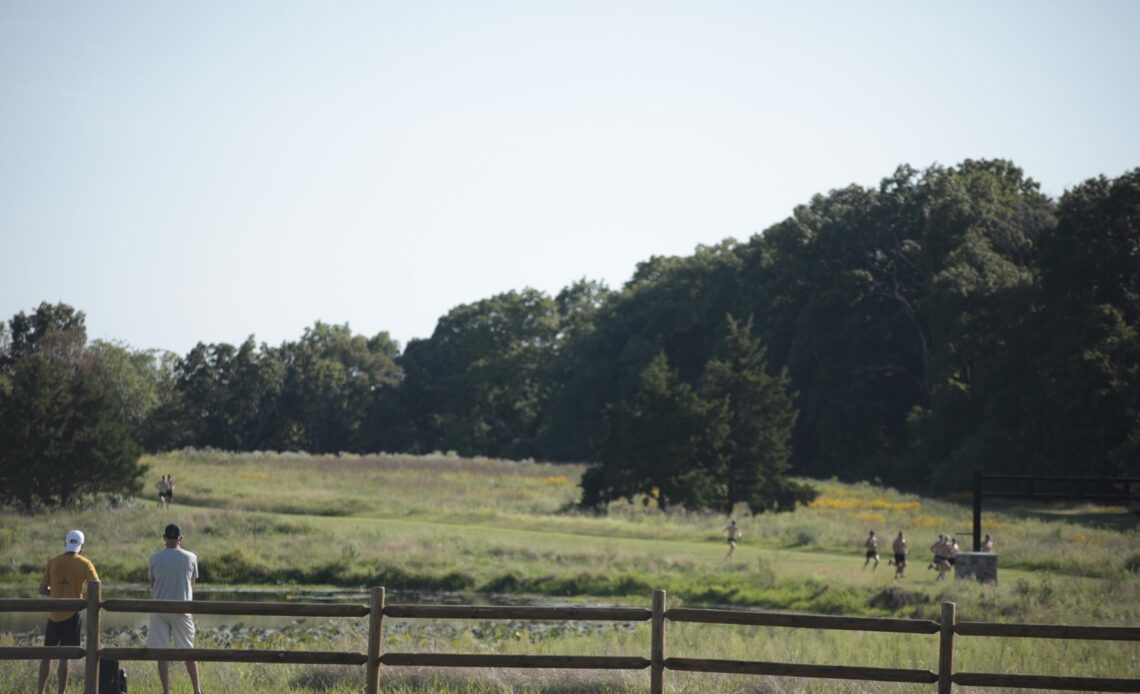When the starting gun fires on Friday morning, the Gans Creek Cross Country Course will be shown off on a national scale for the first time in its young life.
For the partnership of Mizzou Athletics and City of Columbia Parks and Recreation, the 2021 SEC Championships will be the culmination of the patience and hard work put into the venue over the last four years.
If You Build It, They Will Come
When Mizzou head cross country coach Marc Burns walked the site of his team’s future home for the first time in the fall of 2017, he could have used a bush whacker.
The 328-acre plot of land where the course stands began as an untouched property owned by the City of Columbia. Tall prairie grass dominated the landscape while a handful of soccer fields stood as the sole human footprint on the land.
From the very beginning, the idea was to create a venue that could serve as the Tigers’ home course in addition to providing a mixed-usage space for school events and local recreation.
While multiple layouts were considered, the constant in each plan was the need for a looped course.
“Logistically, [a looped course] makes everything easier,” Burns said.
Finding the correct configuration that would measure the correct distance and present a fair challenge took creative problem solving. The first concept, what Burns claims would have been the most difficult course in history, was a 5,000m loop all the way down to the creek to the south. This presented multiple issues, the most pertinent being that most races run at varying distances.
Eventually, the group settled on a dual-looped course consisting of 2,000m and 3,000m loops.
“We knew we could offer a variety of different races,” Columbia Parks and Recreation services manager Erika Coffman said.
The decision allowed the Parks and Recreation department to cater to younger runners that compete over less distance. At the college level, the configuration also allowed Burns and the Mizzou staff to get creative with loop sequences in longer races where multiple laps are required.
The next hurdle was tackling how to make a spectator-friendly course.
What Burns and the project team looked to avoid was a venue where you’d see a runner once and then need to sprint to the next viewing point.
“A…
CLICK HERE to Read the Full Original Article at University of Missouri Athletics…

